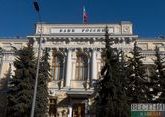The banking sector continue to sum up the results of the past year, which was rather difficult in institutional terms - many licenses were revoked, there were many bank resolutions, but the dynamics of other indicators was quite positive.
A researcher at the Center for Study of Structural Studies of the Institute of Applied Economic Researches of RANEPA, Mikhail Khromov, said that the overall size of the banking sector, expressed as asset growth rate, lags behind the economic development for the second consecutive year: "In 2017, the nominal amount of assets has increased less than GDP On the other hand, as a positive thing, it can be noted that assets have started growing, against last year's decline."
The expert also noted the recovery of lending in certain credit market segments: "If we talk about corporate lending, its growth rates were 1-3%, but there was a strong segmentation. Growth recovery was in the ruble loan portfolio, where credit growth achieved double-digit figures. Against this backdrop there was a fairly strong decline in foreign currency debt. The unidirectional effect of these two factors led to the fact that the total loan portfolio has not grown commensurately."
According to Khromov, the foreign debt reduction is very well correlated with the fact that in early 2015, when sanctions were imposed on major Russian enterprises and the market for external funding was closed, many large corporations simply replaced the foreign debt to non-residents with foreign debt to Russian banks. "At that time it was such an active process that even the Central Bank had to issue foreign currency loans to Russian banks to support this refinancing of large corporate borrowers. Now these loans are being slowly paid. So, the banks' foreign repurchase agreement debts to the CBR have largely disappeared. In a separate development, the foreign debt of the corporate sector is decreasing dramatically," the expert said.

According to him, in 2017, the number of revoked bank licenses was noticeably reduced. In the previous two years, as many as 100 banks left the market due to the revocation of licenses, as well as mergers and acquisitions: "This year this number have been almost halved. About 50 licenses were revoked. A large number of banks withdrew due to mergers and acquisitions. This can be viewed, on the one hand, as a positive factor, because a large number of revoked banking licenses makes the market nervous, it makes the investor nervous, creates such a background of instability. It seems to be slowing down now. "
However, according to Khromov, this process has the opposite side: "One of the most striking events of 2017 in the banking sector was a new bank resolution mechanism developed by the Bank of Russia with the assistance of the Banking Sector Consolidation Fund, which is fully controlled by the Bank of Russia. Such largest banks as B&Bank, Otkritie FC Bank and Promsvyazbank were under resolution through the Banking Sector Consolidation Fund. There is a rather ambiguous situation here: on the one hand, the previous resolution mechanism, which was controlled by the Insurance Agency, was deemed ineffective. The indirect effect of this inefficiency was the fact that the two largest banks that were under resolution this year were bridge bank earlier. That is, they took part in the resolution as a bridge bank tool, but nevertheless could not cope with this process, and were restructured themselves. On the other hand, a negative signal for the market and analysts is that we do not know the actual state of affairs in the banking sector. And as practice shows, the regulator is also not fully aware of how bad the situations is, including in the largest banks."










